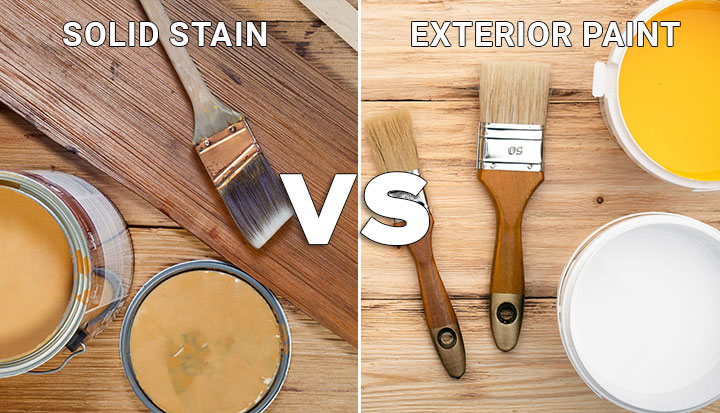
Knowing your options regarding which paint or stain product will work best for your specific needs is crucial when getting ready to have the exterior of your home painted or stained.
Solid stain can be a great option in some conditions, but it should not be utilized in others. Consult an expert painter, such as those at Tall Guy Painting, before buying the paint or stain you intend to use for your property to determine whether to use solid stain or exterior paint.
The Differences Between Paint and Solid Stain
Applying paint to a surface takes more time and costs more money. For the best results, paint should also be applied over a prepared surface. Paints are likely to offer color consistency and a range of sheens when expertly applied. A wider selection of colors is also offered by paint.
Solid stain, on the other hand, is simple to apply and recoat. It is meant to alter a surface’s color while still enabling the wood’s texture to be seen through. Solid stains don’t necessarily need primers and require little to no surface preparation. Thus, applying solid stain to a surface takes less time. Stains are also an economical option and require very little maintenance. If applied as directed by the manufacturer, solid stains can withstand cracking, peeling, and blistering.
Paint vs Stain
One widespread assumption is that stains don’t require redoing. However, this is completely false. Like any painted surface, a stained surface frequently needs to be recoated. The main benefit of stain over paint is that it offers a more natural appearance and typically won’t peel and chip like a paint layer. Stain often only needs one application and doesn’t require any priming.
Paint, as opposed to solid stains, comes in a wider range of colors and sheens. Only flat sheen stains are available, and painted surfaces cannot be covered with them. However, paint can be used on a variety of surfaces, including wood, stucco, and plastic. If your surface is exceedingly absorbent, you might need more stain than you anticipated.
Paint will stay longer than stain if it is applied in accordance with the manufacturer’s instructions. However, solid stains allow moisture to escape, giving wood surfaces more protection.
Should You Use Exterior Paint or Solid Stain?
Solid stain works best for coating wood that is fresh. It is more efficient than paint when it comes to penetrating wood, and serves as its own primer. Solid stain works well on new cedar siding, shake shingles, and fencing because it can seal the wood without the need for primer, reducing the number of applications needed to complete the job and saving time and money.
While applying solid stain over paint is generally not a good choice, it is easy to paint over solid stain. This means that solid stain is usually a better choice for the first few years of a new fence or home’s life.
Despite the advantages of solid stains, paint provides greater protection, durability, and color options. Solid stain loses color more quickly than paint, necessitating earlier repainting. Solid stains frequently end up looking like paint when they are applied over a previously painted or sealed surface, but they often have a shorter lifespan and fewer protective properties, so they lack the advantages of high-quality exterior paint. Because of this, paint is typically the best choice, while solid stain might be helpful if the surface being stained is bare and the user wishes to preserve the wood’s texture.
Contact Us
It ultimately depends on your own preferences and the compatibility of the surfaces you are covering as to whether you should paint or stain your home exterior.
To book a free on-site inspection and estimate in the Lower Mainland, call Tall Guy Painting at (778) 683-5397. We’ll be more than pleased to assist you in selecting the ideal solution for your residence.